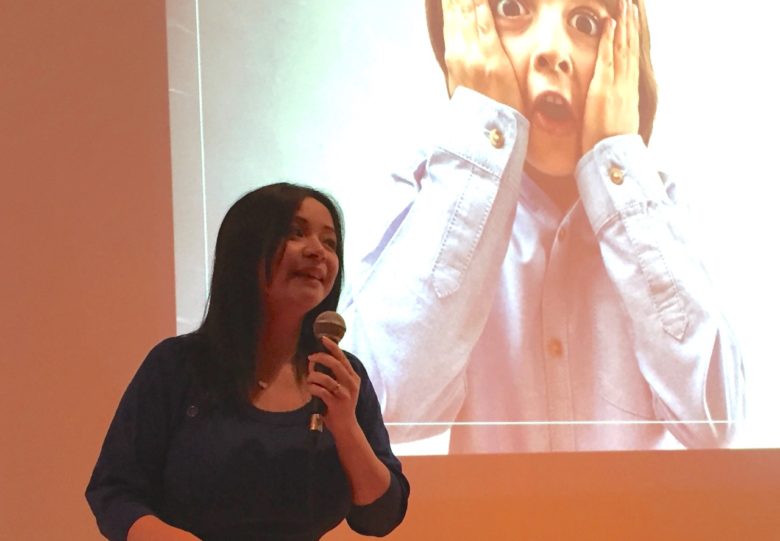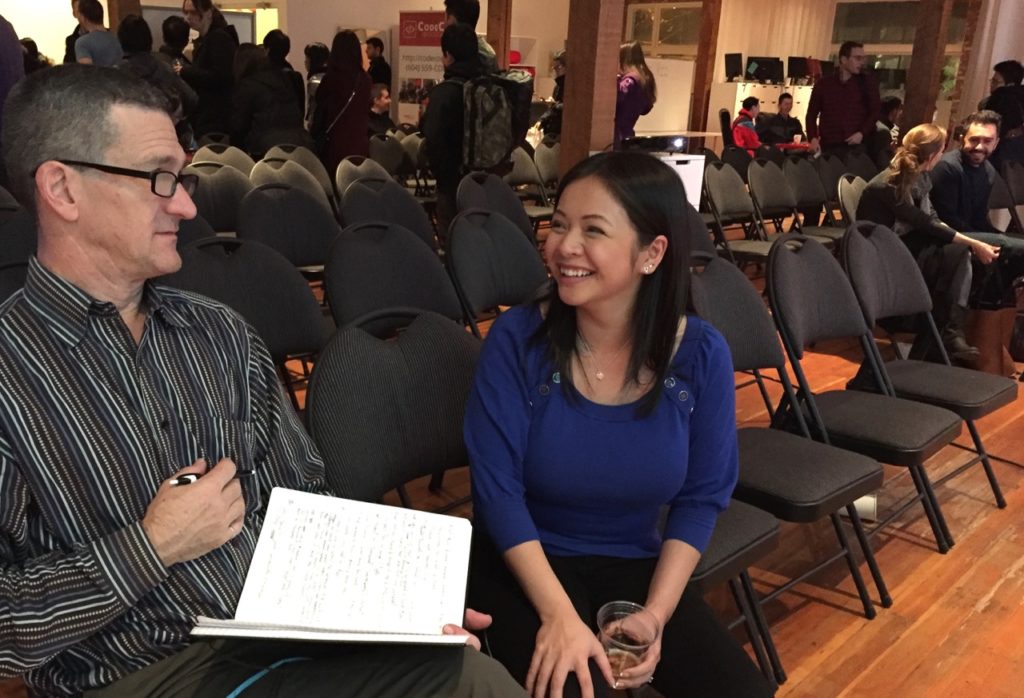In a world where everyone can be a web designer, it’s important to know what to do and what to avoid when building a web site. This goes for experienced web designers, DIY business owners, as well as when hiring a designer to build your site.
With this in mind, I attended another excellent Graphically Speaking-sponsored Meetup called 21 Biggest Mistakes of Web Design, presented by Melody Shih, Creative and Operations Director at Graphically Speaking.
She said we all make similar errors and she listed the 21 most common web design mistakes. With a show of hands, the 150-strong audience confessed to making 1, 5, 10 and more of the listed screw ups. As a web designer, I admit I had my hand up the whole time.
READ MORE: So You Think You Should Hire a Web Designer – Who You Gonna Call?

The important thing about these mistakes, Shih said, is to not make the same ones over and over. With that, she proceeded to expound on 12 of the 21 most pervasive mistakes.
21 Common Web Design Mistakes
Planning and Strategy
- Not using data to drive your decisions – Don’t rely too much on gut instincts and past experience. During planning and strategy, look at good data to define your goals. Understand the needs of different industries. Use surveys online or in house, keyword research, usability testing, etc. to get data.
- Not knowing your audience or the client’s – Using data, figure out who is your target audience. Develop personas and their goals and expectations.
- Not differentiating yourself – or the client
- Not defining page priorities – Using audience definitions, prioritize the top 8-10 things to 1 or 2. User goals should determine page priorities. Balance business goals with user goals, erring on the side of the user.
- Failing to define requirements – Pair requirements with user goals. For user, product detail includes: image, description, specs, variations, price. For business, include: related products. Tie to cycles. Anything that doesn’t serve user goal should be removed.
- Having unrealistic time expectations – A mistake made by the client, exacerbated by the designer who agrees to unrealistic timeline. Stretching the schedule makes the client unhappy. Provide a timeline for phases to work through gaps. Don’t take work that can’t be completed in a given timeline. Have confidence in turning down jobs.
- Not structuring your website for growth
- Building a site that doesn’t convert – Kill your design ego. Sometimes the highest converting page is not the prettiest. Test A/B. Make changes to headlines, CTA, text, and images one at a time and monitor.
Information Design
- Not being a subject matter expert
- Bombarding your audience with too much information
- Not compelling your visitors to take action – Make each page go somewhere. Avoid dead ends. Use CTAs, related items, contact page link. Implement goal tracking to get data. Keep testing.
- Confusing navigation
- Not building your website for SEO – Don’t think: “build it and they will come,” like in Field of Dreams. Think: build it, maintain, optimize, promote, analyze and improve it, they will come. Consider SEO at the beginning of a project. SEO costs more after the project launches than before. Work SEO into development process. Plan probable site architecture, relevant high quality content, keyword-rich headings and subheads, metadata, image alt tags, sitemap, optimum site speed.
READ MORE: Using WordPress SEO by YoastVisual Design
- Not employing a content-first strategy
- Making a poor first impression – You have 50 milliseconds to make an impression. Use the 5-Second Test to upload a jpg of your design and send links to subjects to view for 5 seconds and complete a survey to describe what’s seen. Ask them: who you are, what product/service you provide, what’s in it for the user.
- Inconsistent interface design
- Violating design conventions – Don’t be so creative that you ignore conventions. Remember that users spend more time elsewhere. Don’t frustrate users while pushing creativity. Focus creativity where it won’t interfere with user experience.
- Poor use of content and white space
- Visual Overload –Some themes go on forever with info fields. Don’t give users too much to look at. If it doesn’t support your goals – delete. Avoid bright shiny objects and long scrolling pages with too many sections: max 3-4.
- Using poor images
- Not delivering properly across all devices – Mobile and tablet use have surpassed laptop and desktop! Think mobile first!
READ MORE: Surviving Mobilegeddon: How to get Optimized for Smartphones
Don’t do that again
In conclusion, Shih reminded the audience of designers and programmers that we are moving at a rapid pace, that sometimes we have to make things up and cut corners, but that doesn’t mean we should have unrealistic expectations about everything going right on every project.

Essentially, we are all contributing to the common web design mistakes made on the Internet. We should learn from our mistakes, but don’t repeat them.
“Go forth and make new mistakes!” she said.
What web design mistakes have you made recently that you hope to never repeat? What mistakes are missing from Shih’s list?


